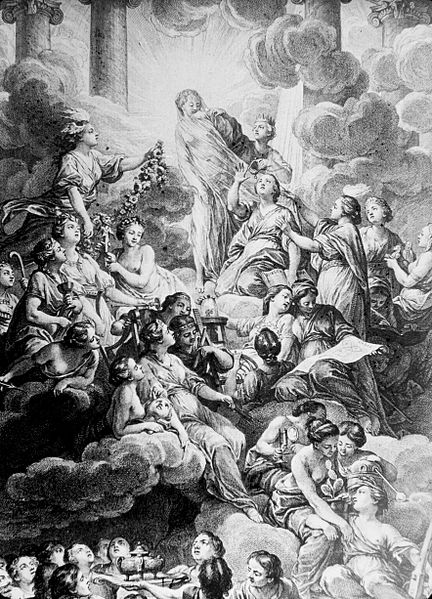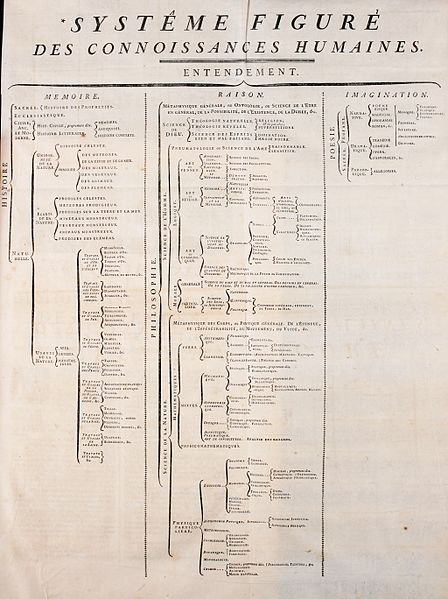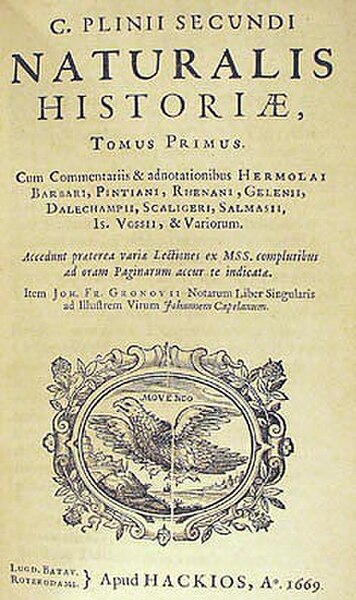Encyclopédie, ou dictionnaire raisonné des sciences, des arts et des métiers, better known as Encyclopédie, was a general encyclopedia published in France between 1751 and 1772, with later supplements, revised editions, and translations. It had many writers, known as the Encyclopédistes. It was edited by Denis Diderot and, until 1759, co-edited by Jean le Rond d'Alembert.
The title page of the Encyclopédie
Extract from the frontispiece of the Encyclopédie (1772). It was drawn by Charles-Nicolas Cochin and engraved by Bonaventure-Louis Prévost. The work is laden with symbolism: The figure in the centre represents truth—surrounded by bright light (the central symbol of the Enlightenment). Two other figures on the right, reason and philosophy, are tearing the veil from truth.
Fig. 3: "Figurative system of human knowledge", the structure that the Encyclopédie organised knowledge into. It had three main branches: memory, reason, and imagination.
An encyclopedia or encyclopaedia is a reference work or compendium providing summaries of knowledge, either general or special, in a particular field or discipline. Encyclopedias are divided into articles or entries that are arranged alphabetically by article name or by thematic categories, or else are hyperlinked and searchable. Encyclopedia entries are longer and more detailed than those in most dictionaries. Generally speaking, encyclopedia articles focus on factual information concerning the subject named in the article's title; this is unlike dictionary entries, which focus on linguistic information about words, such as their etymology, meaning, pronunciation, use, and grammatical forms.
Entry for the French word "Amour" (Love) in a paper encyclopedia (Larousse Universel) and in an online encyclopedia (Wikimini.org).
Title page of Lucubrationes, 1541 edition, one of the first books to use a variant of the word encyclopedia in the title
Naturalis Historiæ, 1669 edition, title page
Isidore of Seville author of Etymologiae (10th. century Ottonian manuscript)







